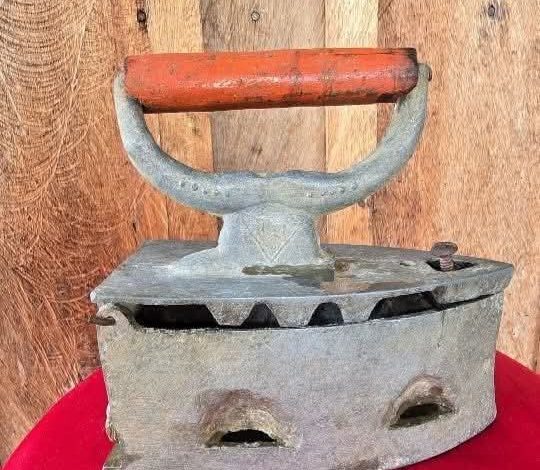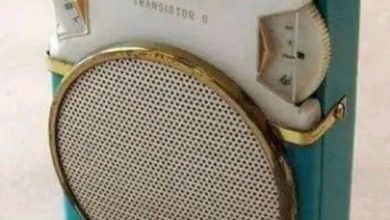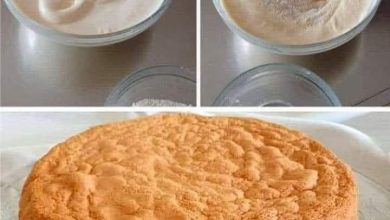
ADVERTISEMENT
The Timeless Weight of the Charcoal Iron
Introduction:
In a world where electric steam irons and cordless pressing gadgets have become everyday conveniences, the sight of an old charcoal iron like the one in this image immediately transports us to a different era—one defined by patience, manual effort, and raw practicality. Resting atop a red cushion, this vintage iron is more than just a tool; it’s a symbol of domestic history and cultural resilience. With its rugged metal frame, wooden handle, and soot-stained mouth, it tells a story of a time when ironing was both an art and a workout.
Main Body:
The charcoal iron, often referred to as a coal iron or box iron, was widely used before the advent of electric irons. Its operation was simple but effective: hot charcoal would be placed inside the belly of the iron to generate heat. The vents near the bottom allowed air circulation to keep the coals burning, while the thick metal base retained and evenly distributed the heat for a smooth ironing experience.
In the image, we see a classic version with a heavy cast-iron body, a jagged lid design for ventilation, and a stout, slightly curved wooden handle—painted red, likely for both grip and identification. These irons were built to last, often passed down through generations as household staples, and they served their purpose long before electricity reached many parts of the world.
ADVERTISEMENT
The act of using one was no small feat. It required care and concentration—adding charcoal, fanning the fire just right, and handling the heat with caution. A moment of distraction could mean burnt fabric, or worse, a singed hand. Yet for all its challenges, this tool brought crisp collars, unwrinkled dresses, and sharp creases to countless wardrobes.
Interestingly, the charcoal iron is still in use today in some regions—especially where electricity is unreliable or unavailable. It’s favored by some professional tailors and launderers for its lasting heat and steady performance. In many cases, it’s not just a tool of necessity but a point of pride and tradition.
Beyond its utility, this iron has also become a collectible. Antique lovers cherish it for its craftsmanship and nostalgic value. Museums, vintage shops, and even homes use it as decor—sometimes repurposed creatively as doorstops, bookends, or rustic centerpieces.
Conclusion:
This image of a charcoal iron is not just a window into the past—it’s a tribute to the ingenuity and perseverance of generations before us. It represents more than just a way to press clothes; it reflects a slower, more intentional way of living. A time when tools were built to last, and everyday tasks were handled with care and attention. Today, as we marvel at modern comforts, it’s important to look back and honor the enduring legacy of simple inventions like this one. Because sometimes, the heaviest tools leave the lightest footprints on our memories.
ADVERTISEMENT
Let me know if you’d like this turned into a short social media caption or adapted into a storytelling piece!




